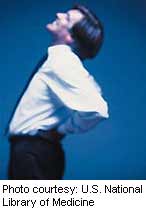
THURSDAY, Sept. 13 (HealthDay News) — Care provided by medical specialists is the main reason spending on treatment for back and neck problems in the United States has nearly doubled since the late 1990s, according to a new study.
Researchers analyzed data on how much Americans spent on ambulatory (non-hospital) care for back and neck problems from 1999 to 2008. The study was published Sept. 1 in the journal Spine.
In 2008, about 6 percent of adults made an ambulatory care visit for diagnosis of a back or neck condition, a total approaching 14 million visits. The researchers found that the percentage of patients who made ambulatory spinal care visits during the study period remained “remarkably stable,” according to a journal news release
Adjusted for inflation, annual medical spending for spinal care per patient increased by 95 percent from 1999 to 2008, from $487 to $950 in 2008 dollars. Most of the spending increase was for treatment by medical specialists. There was little or no change in spending for spinal care provided by primary care and family doctors, internists or general practitioners.
Spending for care provided by chiropractors also remained stable, the researchers found. Spending for care by physical therapists was the most costly service throughout the study period, but appeared to decrease over time.
“Recent increasing costs associated with providing medical care for back and neck conditions — particularly subspecialty care — are contributing to the growing economic burden of managing these conditions,” wrote study author Matthew Davis and colleagues at the Dartmouth Institute in Lebanon, N.H.
They noted that back pain is the second most common reason for medical visits, after upper respiratory infections.
“Estimates of the total expenditures on care vary, but the general consensus is that approximately $90 billion is spent on the diagnosis and management of low-back pain, and an additional $10 billion to $20 billion is attributed to economic losses in productivity each year,” the researchers wrote.
More information
The North American Spine Society offers back-pain prevention tips.

